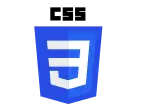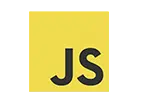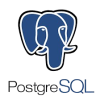Python Full Stack Development
- Program Duration - 45 days
- Virtual Live Interactive Sessions
- Hands on learning & projects
- Mentors with Industry Expertise
- Interview Preparation and Mock Interviews
- Placement Assistance
HIRING PARTNERS









BECOME PYTHON FULL STACK DEVELOPER WITH SKILL MOVE
- SkillMove’s Python Full Stack Development Course is designed to help aspiring developers build dynamic, scalable, and high-performance web applications using Python. This course covers frontend technologies (HTML, CSS, JavaScript, React.js) along with backend development using Python, Django, and Flask, including database management, API development, and deployment strategies.
- Category: Programing
- Coding Level: High
SKILLS COVERED
Frontend Development




Backend Development



Databases



LEARNING METHODOLOGY

COURSE CURRICULUM
Module 1: Python(Core and Advance) course content
Python Introduction
Python IDLE’s Download and Installation
Python Character set
Python Keywords / Reserved words
Python Identifiers
Python Datatypes
Python Variables
Python Operators
Python Conditional Statements/ Conditional flow control Statements
Python Looping statements
Python Un-conditional statements/ Un-conditional flow control statements
Python Functions
Python Packing and Un-Packing
Python Decorators
Python Monkey Patching
Python Modules
Python Packages and Sub-packages
Python Built-in Functions
Python Built-in Modules
Python File Handling
Python Date and Time
Python Data Structures(List,Tuple,String,Set,Dictionary,Arrays)
Python Iterators and generators
Python OOPS
Python Meta Programming
Python Exception Handling
Python Multi-Threading and Concurrency Control
Python Regular expressions
Python Numpy Module
Python Pandas Module
Python Testing and logging
Module 2: Data Structures and Algorithms Using Python Course content
● Introduction to Data Structures and Algorithms
● Arrays and Lists
● Strings
● Stacks
● Queues and Dequeues
● Linked Lists
● Hashing and Hash Tables
● Trees and Binary Trees
● Heaps
● Graphs
● Searching Algorithms
● Sorting Algorithms
● Dynamic Programming
● Greedy Algorithms
● Backtracking Algorithms
● Divide and Conquer Algorithms
● Bit Manipulation
● Advanced Data Structures
Module 3: SQL with Mysql Course Content
What is Database, types of Databases
● DBMS,RDBMS,DBMS vs RDBMS
● SQL databases and No-SQL databases
● Sql introduction
● Working with DDL Commands
● Working with DML Commands
● Working with DQL Commands
● Working with DCL Commands
● Working with TCL Commands
● Working with Intigrity constraints
● Working with referential intigrity constraint
● Working with operators
● From and Where clause
● Group by and having clause
● Order by clause
● Like Operator
● In and not In operator
● Is and Is not operator
● Working with Null values
● Working with case staments
● Working with as keyword
● Working with duplicate tables
● Working with temporary tables
● Working with Unions
● Working with Joins
● Working with Views
● Working with indexes
● Working with Number functions in Mysql
● Working with String functions in Mysql
● Working with Date functions in Mysql
● Working with Time functions in Mysql
● Working with Window functions in Mysql
● Working with Stored Procedures
● Working with Mysql Common Table Expressions
● Working with Triggers and Cursors
● Working with DBMS Concepts(Normal Forms and transactions)
● Connecting Mysql with Python(PDBC)
Module 4: MongoDB Course Content
Introduction to MongoDB
● Installation and Setup
● Databases and Collections
● BSON and JSON Data Formats
● Data Types in MongoDB
● CRUD Operations (Create, Read, Update, Delete)
● Querying and Filtering Data
● Comparison and Logical Operators
● Indexing (Single, Compound, Text, Wildcard)
● Aggregation Framework
● Data Modeling (Embedded Documents and References)
● Relationships (One-to-One, One-to-Many, Many-to-Many)
● Schema Design Best Practices
● MongoDB Atlas (Cloud) Setup and Usage
● Backup and Restore
● Role-Based Access Control (RBAC)
● User Management and Security
● Authentication and Authorization
● Transactions and ACID Properties
● Integrating MongoDB with Python (PyMongo)
● Query Optimization and Explain Plans
● Performance Monitoring and Profiling
● Sharding and Horizontal Scaling
● Replication and Replica Sets
Module 5: HTML, CSS, JavaScript, and jQuery Course Content
HTML (Hypertext Markup Language)
- Introduction to HTML
- HTML Structure and Basic Tags (<html>, <head>, <body>)
- Text Formatting Tags (
–
,
,
,, , )
- Links ( tag), Images (
tag)
- Lists (Ordered, Unordered, and Definition Lists) ● Tables (,,
,) ● Forms and Input Elements (
Module 6: CSS (Cascading Style Sheets)
Introduction to CSS
● CSS Syntax and Selectors (Universal, Class, ID, Grouping)
● CSS Box Model (Margin, Border, Padding, Content)
● CSS Units (px, %, em, rem, vw, vh)
● Styling Text (Fonts, Colors, Text Alignment, Text Decoration)
● CSS Backgrounds and Borders
● CSS Positioning (Static, Relative, Absolute, Fixed)
● CSS Gradients, Transitions, Transformations
● CSS Flexbox
● CSS Grid Layout
● CSS Pseudo-classes and Pseudo-elements
● Media Queries (Responsive Design)
● CSS Animations
Module 7: JavaScript (JS)
Introduction to JavaScript
● Variables and Data Types (var, let, const)
● Operators and Expressions
● Conditional Statements (if, else, switch)
● Loops (for, while, do-while)
● Functions (Regular and Arrow Functions)
● JavaScript Objects,Strings Arrays
● DOM Manipulation (Selecting, Adding, Removing Elements)
● Event Handling (Click, Hover, Key Events)
● JavaScript Form Validation
● Error Handling (Try, Catch, Finally)
● Introduction to ES6+ Features (Destructuring, Spread Operator)
● JavaScript Promises and Async/Await
● Local Storage and Session Storage
● Introduction to JavaScript Frameworks (React)
Module 8: jQuery
Introduction to jQuery
● jQuery Selectors and Methods
● Manipulating HTML and CSS with jQuery
● Event Handling with jQuery
● Animations and Effects (Hide, Show, Toggle, Fade)
● Traversing the DOM with jQuery
● jQuery Form Validation
● Handling AJAX Requests with jQuery
● jQuery Plugins and Widgets
● Introduction to jQuery UI
● Best Practices with jQuery
Module 9:React Course Content
Introduction to React
● JSX (JavaScript XML)
● Components in React
● State Management
● React Events Handling
● React Lifecycle Methods (Class Components)
● React Hooks
● React Routing (React Router)
● Forms and Form Handling
● React Context API
● Styling in React
Module 10: Django Course Content
Introduction to Django
● Django Basics
● Working with Models (ORM)
● Django Admin Interface
● Views and Templates
● URL Routing and Navigation
● Django Forms and Form Handling
● Django Authentication and Authorization
● Working with Databases
● Django Middleware
● Django REST Framework (DRF)
● Working with Static and Media Files
● Django Security
TRANSFORM YOUR CAREER TODAY!
- Limited Batch Size Of 10
- Dedicated Learning Management System
- Designed For Working Professionals & Freshers.
- Flexible EMI Options
Fee: INR 130,000
80,000/-
FOR EXCLUSIVE SCHOLARSHIPS
FAQ'S
How to Become a Python Full Stack Developer?
To become a Python Full Stack Developer, follow these steps:
- Learn Web Development Basics: Start with HTML, CSS, and JavaScript.
- Master Frontend Frameworks: Learn React.js for dynamic UI development.
- Understand Python Programming: Master Python fundamentals.
- Learn Django & Flask: Build powerful backend applications.
- Work with Databases: Learn SQL & NoSQL database management.
- Understand API Development: Learn to build RESTful and GraphQL APIs.
- Gain Hands-On Experience: Work on real-world projects.
- Stay Updated: Keep learning about new frameworks and technologies.
- Build a Portfolio: Showcase projects on GitHub.
- Prepare for Job Interviews: Practice coding challenges and technical interviews
Who is this course for?
This course is designed for students, professionals, and career switchers looking to
specialize in Python-based full-stack development.
What will I learn in this course?
You will learn how to build, deploy, and manage full-stack web applications using Python
and modern technologies.
Do I need prior experience?
No prior experience is needed. The course starts from fundamentals and gradually advances
to complex backend development.
Will I work on real-world projects?
Yes! The course includes multiple real-world projects that will help you build a strong portfolio to showcase your skills to employers.
